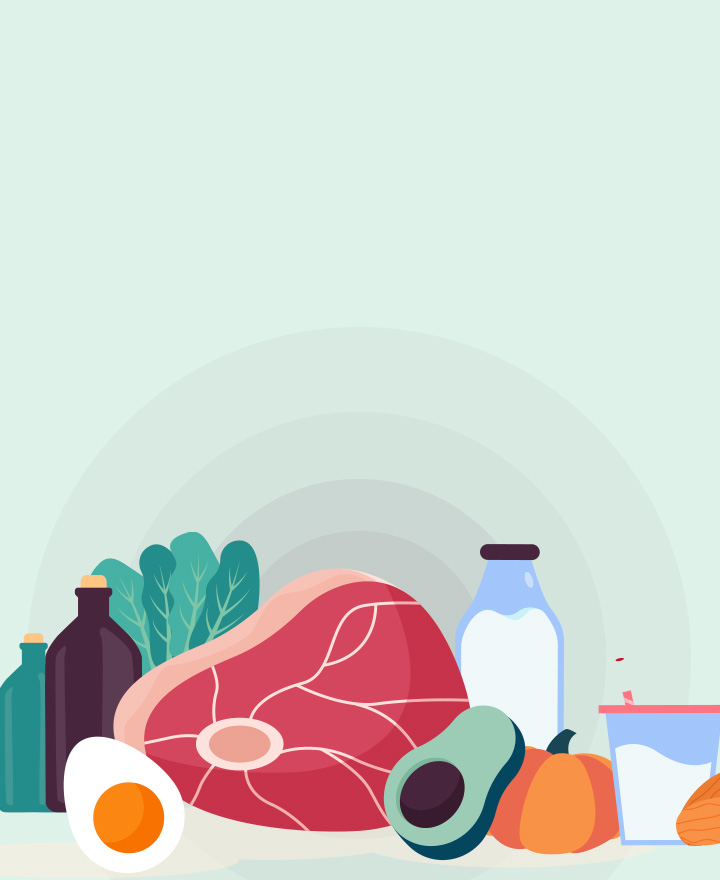

What are the 3 types of protein?
We often hear about the importance of protein consumption and how a more significant chunk of our diet should be loaded with food that offers a considerable dose of essential amino acids. But what are the different types of proteins, and how are they different from one another? You may have heard the terms — complete proteins, incomplete proteins, and protein equivalents. Let's learn more about them and know the food items that contain these in healthy proportions.
Types of Protein
There are three types of protein - complete, incomplete, and protein equivalents.
1. Complete Proteins
Protein comprises 20 types of amino acids, of which our body produces 11. The remaining 9 essential amino acids should be obtained from foods as our body cannot make them. When a food contains all these nine essential amino acids, it is a complete protein. All animal-based foods, including eggs, meat, poultry, fish, seafood, and dairy products, are complete proteins. Plant-based sources of complete protein include buckwheat, quinoa, hempseed, soy, etc.
2. Incomplete Proteins
If your food doesn't have all the nine essential amino acids, it's an incomplete protein. Incomplete proteins include vegetables, whole grains (brown rice or whole wheat bread), nuts and seeds (such as walnuts, almonds, and sunflower seeds), and legumes (like beans, peas, and lentils). Most vegetarian and vegan-friendly foods are incomplete proteins.
3. Protein Equivalents
Our body requires about 5-7 ounces of protein every day which needs to be spaced out throughout the day. Athletes, bodybuilders, or people who do intense weight training need more protein than the recommended amount.
Conclusion
Now that you know the types of proteins and their sources, make sure you include them in your diet to meet the daily recommended dietary requirement. With a few exceptions, most plant-based foods are typically viewed as "incomplete" sources of protein. In contrast, animal-based foods are considered "complete" proteins.
One of the important components of our overall wellness is also being financially secured. Healthcare emergencies can happen any time, but a good health insurance policy can protect you from such uncertain situations. To know more about Wellness and other health related tips, visit the wellness corner.
Source: brainly.in, healthline
Disclaimer: This blog provides general information and discussions about health and related subjects. The information and other content provided in this blog, website or any linked materials are not intended and should not be considered or used as a substitute for medical advice, diagnosis or treatment. Kindly contact your doctor before starting a new medicine or health regime.
Related Articles
Why you should include protein in your diet?
How Much Protein Does Milk Have
Signs and Symptoms of Protein Deficiency
Ways To Include Protein-Rich Food In Your Diet
Can Too Much Protein Powder Be Harmful
Published on November 21, 2023














 Health Insurance
Health Insurance  Travel Insurance
Travel Insurance  Car Insurance
Car Insurance  Cyber Insurance
Cyber Insurance  Critical Illness Insurance
Critical Illness Insurance
 Pet Insurance
Pet Insurance
 Bike/Two Wheeler Insurance
Bike/Two Wheeler Insurance  Home Insurance
Home Insurance  Third Party Vehicle Ins.
Third Party Vehicle Ins.  Tractor Insurance
Tractor Insurance  Goods Carrying Vehicle Ins.
Goods Carrying Vehicle Ins.  Passenger Carrying Vehicle Ins.
Passenger Carrying Vehicle Ins.  Compulsory Personal Accident Insurance
Compulsory Personal Accident Insurance  Travel Insurance
Travel Insurance  Rural
Rural